When you want to grow a plant, you start by germinating a seed. Or so the fairy tales would have you believe. The fact is, when it comes to commercial agriculture, clones and micro tissue cultures are nearly as popular as seeds. Many plants and trees, from apples to cannabis, rely almost entirely on clones and cuttings. Similarly, gardeners will be frustrated when they go looking for bamboo seeds, as they are scarce and problematic for a number of reasons.
The problem with bamboo seeds begins at the flowering stage. Some species of bamboo can take as long as 120 years to flower and go to seed. Then there’s the challenge of storing and keeping track of the seeds for the next century. It’s impossible to recognize a bamboo species by its seed, so accuracy is another thorny issue. And while some growers maintain that seeds produce the most vigorous plants, many insist on clones and tissue culture for dependability and consistency.
NOTE: This article first appeared in December 2021, most recently updated in April 2024.

Gathering seeds from flowering bamboo
Most of us probably consider the germinating seed to be the first stage in the life cycle of a plant. But if you back up, you have to think about where the seed comes from. Bamboo, like any flowering plant, produces seeds after it flowers. But unlike most plants, which flower on an annual basis, bamboo’s biological clock ticks at a much different pace.
Depending on the species, some bamboo can take a few decades to flower. Certain members of the genus Phyllostachys, like Moso and Madake bamboo, actually take more than a century to flower. In many cases, all members of a given species will bloom at the same time, in what’s called synchronous or gregarious flowering.
And in most cases, the bamboo dies after it flowers, the way annual plants and flowers do. So if it flowers gregariously, that means all the plants will die at once. Therefore, it’s very important to gather those seeds. The good news is that a well-established grove of bamboo can produce a prodigious quantity of seed. But then they must be properly dried, stored and identified.
In certain species, like Bambusa balcooa, the plants do not produce fertile, viable seeds. So collecting them is somewhat useless. Luckily, the entire plant won’t die when this species flowers, only the individual culms that are in bloom. But it’s vital to have other means for propagating these bamboo varieties. (See below.)
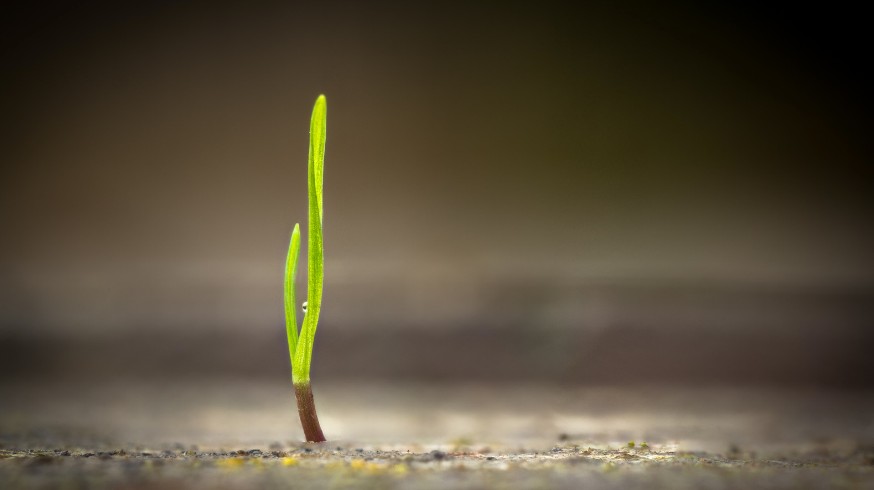
Knowing one bamboo seed from another
If you’re collecting seeds from a plant that flowers once every 50 or 100 years, then you need a pretty good system for storing and organizing them. Over the decades and between the generations, it’s easy to lose track. Things get moved, and labels fade or decompose.
What’s worse, it’s impossible to look at a seed and know what species of bamboo it is. Realistically, you can’t even tell if it’s bamboo.
Given the scarcity of bamboo seeds and the difficulty of collecting them, suppliers can charge a steep price. Especially for more unusual species. You can go on Amazon and see for yourself.
But buyer beware! I’ve seen bamboo enthusiasts post pictures of their newly sprouted “bamboo seeds” which turn out not to be bamboo at all.

How to source bamboo seeds
Unless you have a reputable supplier, or someone you know personally, ordering bamboo seeds is a risky business. You can find sources online, even from places like Amazon. But there’s no way to guarantee quality or results. And even the most transparent suppliers will acknowledge that they cannot guarantee the accuracy of their seed species.
You can also reach out to us at Bambu Batu, and we’ll introduce you to our trusted seed supplier.
Then there’s another problem with importing bamboo seeds. The Plant Quarantine Act of 1912 and USDA regulations associated with that act prohibit the importation of viable bamboo plants or seeds except through a USDA quarantine greenhouse. This law doesn’t single out bamboo but applies to any foreign plant species that could potentially threaten domestic habitats by carrying pests or diseases. Or in the case of bamboo, the fear is that it could be invasive.
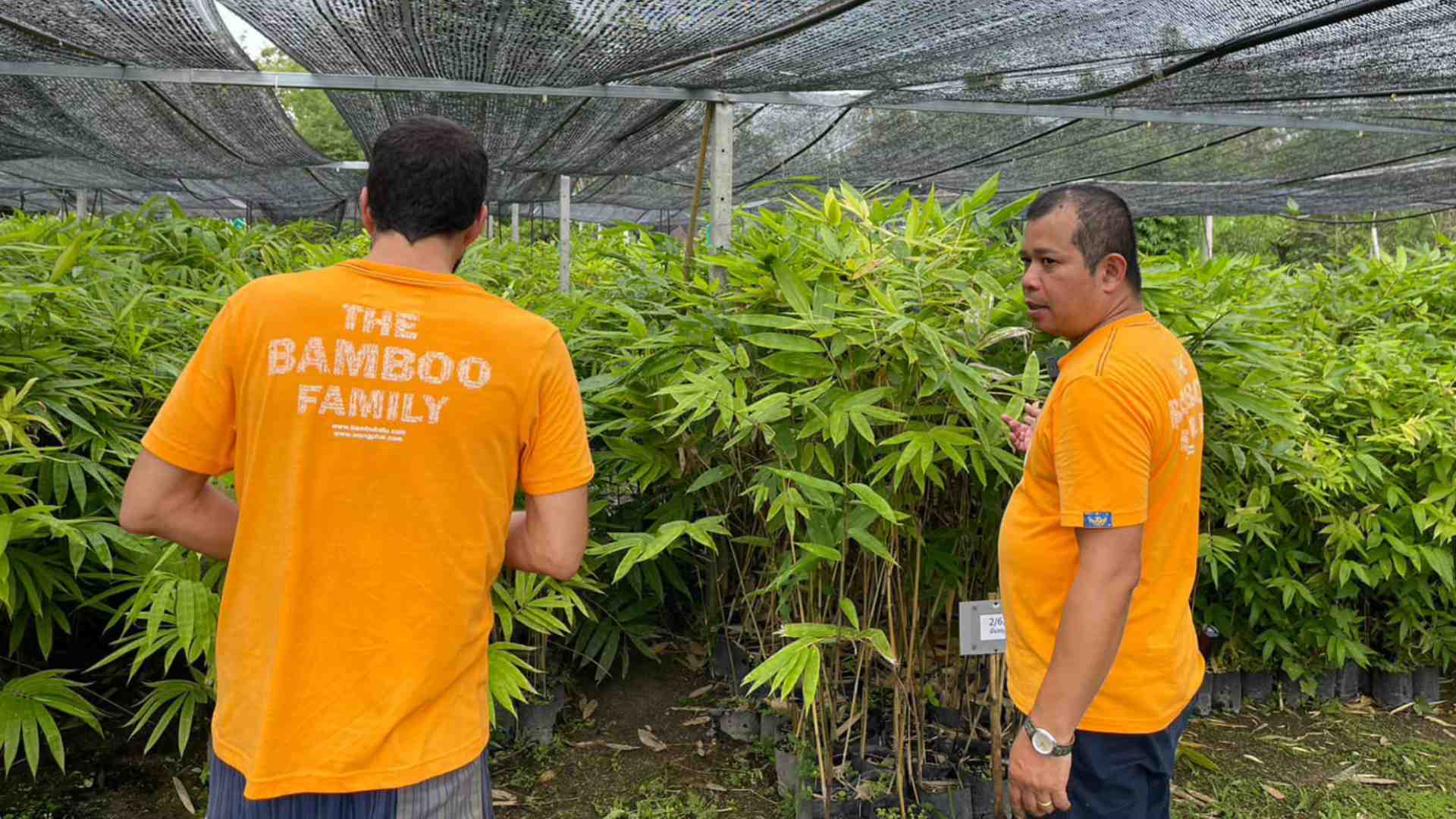
Propagating bamboo
Looking at the legality and unreliability of importing bamboo seeds, there’s ample reason to seek a better alternative for propagating these marvelous grasses. And fortunately, you have a few options. (To learn more, check out our popular article on 3 Ways to Propagate Bamboo.)
With running bamboo, which has those long, sprawling, and sometimes insidious rhizome roots, it’s very easy to take a cutting from the rootstock and replant it into some moist, well-drained potting soil. Rhizome cutting or rhizome division is neither difficult nor risky. If the cutting doesn’t survive, you can be sure that the mother plant will, and that it will continue to proliferate more rhizomes. (Whether you like it or not!)
More than nine times out of ten, this is how bamboo reproduces in nature. Only very rarely, at the end of its prolonged life cycle, will a bamboo plant resort to casting seeds in order to self-replicate.
With tropical and clumping bamboo, rhizome divisions are not as easy. Instead, cuttings are typically taken from the younger culms. Depending on the species, this procedure can be more or less difficult, and it may require some trial and error.
These days, micro-tissue propagation is becoming the desired method, at least in large-scale farming and agricultural ventures. It involves the same basic principle as taking cuttings from a rhizome or from a culm, but using tiny (sometimes microscopic) portions of plant tissue and a sterile laboratory setting.
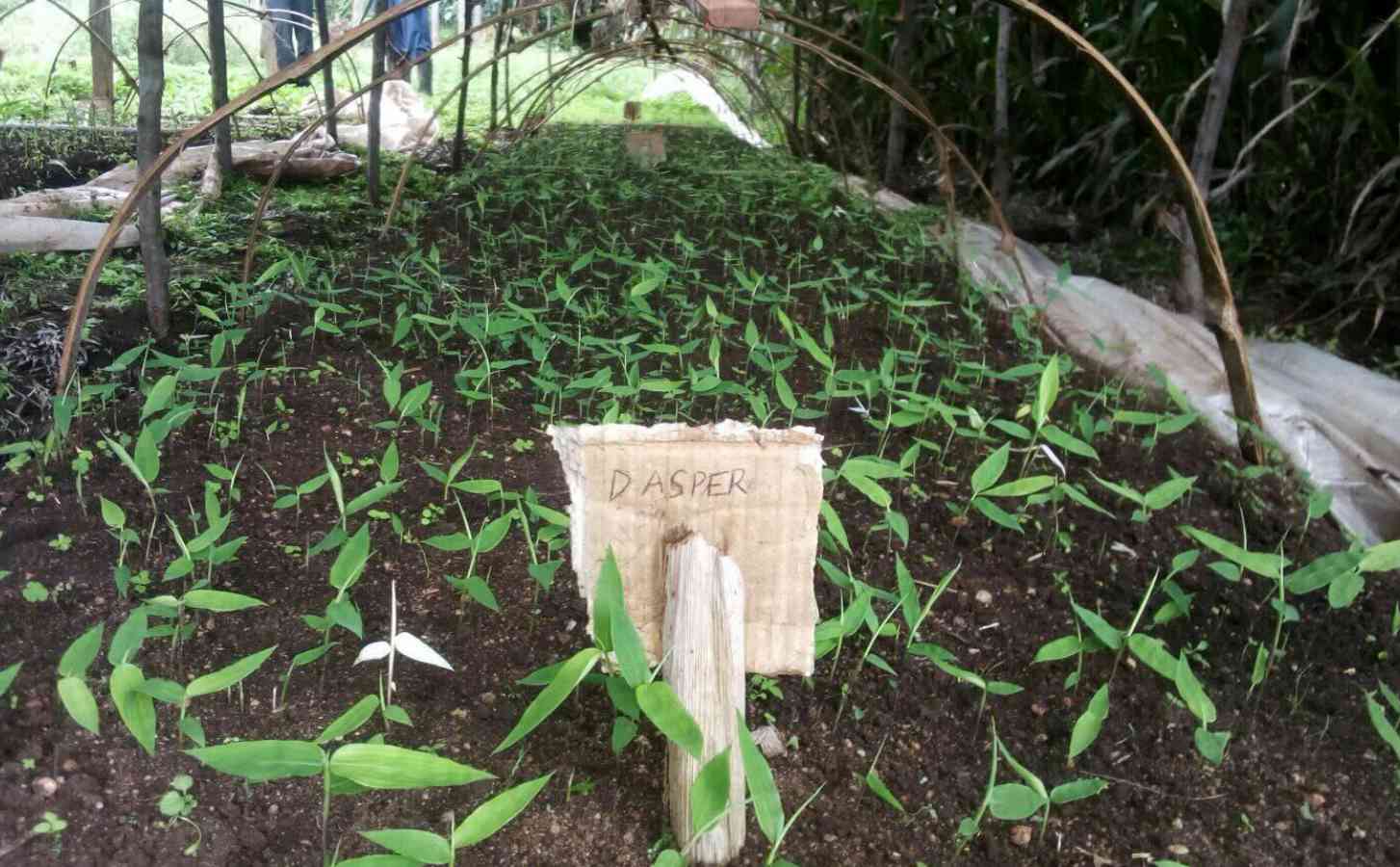
Sprouting bamboo seeds
Despite the challenges of seed collecting and identification, many bamboo growers like to keep it old school. If you have a good supply of seeds, from your own farm or another reliable source, you can still do some pretty large-scale bamboo propagation this way. According to proponents, bamboo seeds will produce more vigorous plants than a cutting.
If you’re managing a plantation with hundreds or thousands of acres, rhizome cuttings may no longer be practical. So farmers of Moso bamboo, for example, prefer to plant seeds. At least in China, there’s still a substantial stockpile of Moso seeds.
But some species, like B. Balcooa, will not produce viable seeds, so clones and tissue propagation are the only way to go. Scientists in India continue to perfect their methods for cultivating this important tropical bamboo.
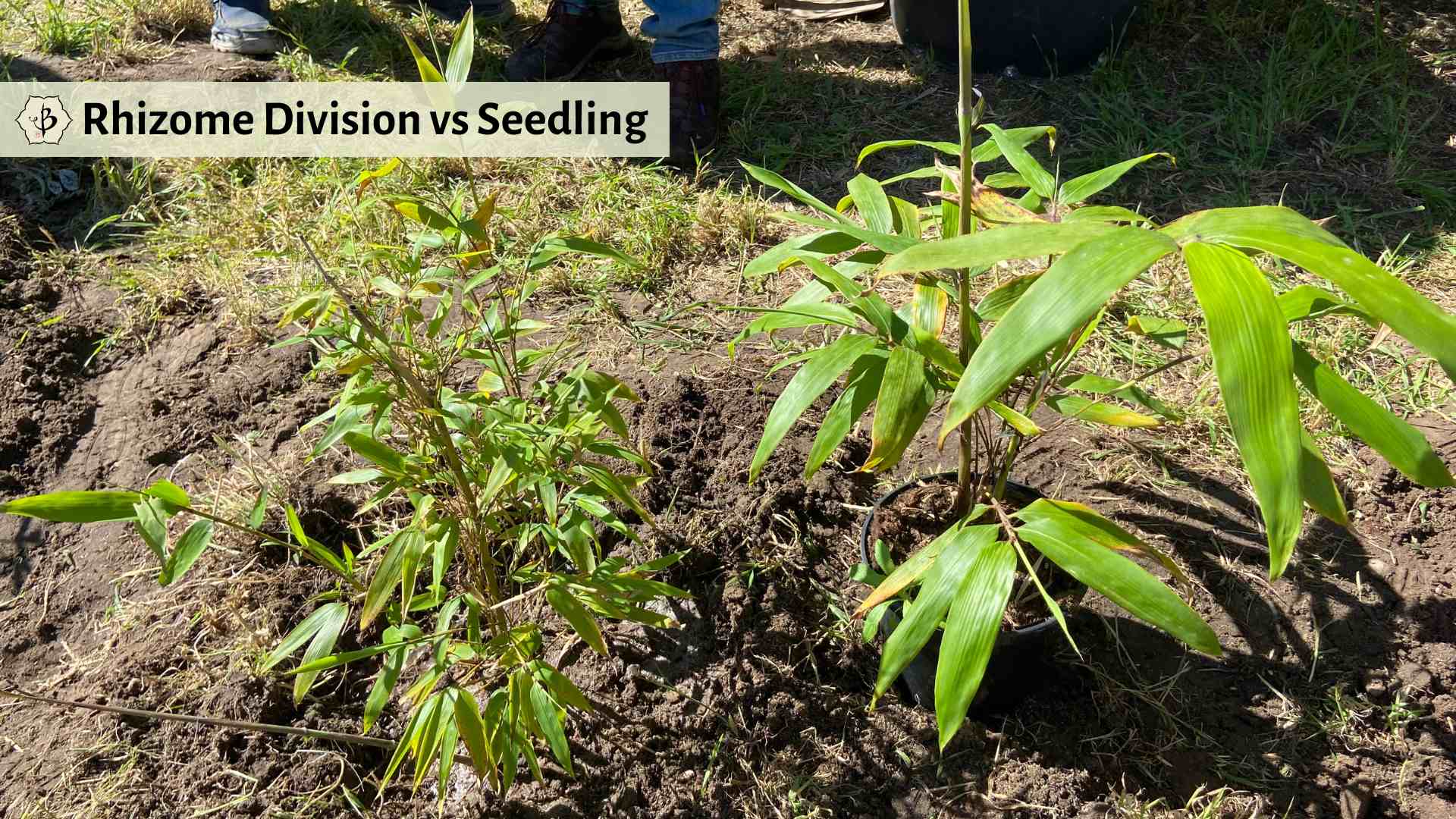
Bamboo seedlings and rhizome cuttings
As stated above, seeds often result in more vigorous plants than what you get from cuttings or rhizome divisions. In fact, a one- or two-year-old seedling might look much healthier than a young bamboo from a divided rhizome. As in the photo above, the culms are likely to be taller with larger and more vibrant leaves.
But don’t be fooled, if you’re thinking of planting these in the ground. What really matters is what’s underground, and a seed from a running bamboo will take 3 to 4 years to develop a strong rhizome system. When you propagate by rhizome division, however, the rhizome is already established, so the plant will have a much better chance of survival without constant nurturing. The seedling on the right, in the photo, although it looks bigger and more robust, is actually about 3 years behind in terms of development.
Keep in mind that this works differently with tropical, clumping bamboo. A clumper grown from seed will develop a healthy rhizome right away because the rhizome morphology of a clumper is quite different.

Bamboo seeds vs clones
Still, the debate between bamboo farmers rages on, whether cuttings or seeds are the better way to cultivate bamboo. Some argue that the seeds are slower to take off, while cuttings from a mature mother plant already have something of a head start. But then some experts claim that their seed-grown bamboo shows far more vigor and vitality even within the first several months.
The thing about seeds is their phenotypical variation. Although the seeds may have all come from the same parent plant, the next generation can exhibit widespread differences. Like siblings, they are all closely related members of the same species, but they each have their own unique characteristics. Some will be strong and vigorous, others will be unpredictable, and some won’t survive past the first or second year. When managing a sizable plantation, these uncertainties can prove challenging and problematic.
Clones, on the other hand, are all genetically identical copies of the same mother plant. Because of this, you can rely on a very high degree of regularity and predictability. But you also have to know everything you can about the mother. If you are cloning from a 20-year-old plant, then your cuttings will all be 20-year-old plants as well. Depending on the blooming cycle of your bamboo species, your young-looking plants might actually be on the verge of a massive, life-ending flowering.
With so many factors at play, it’s difficult to say which is the better way to go. Clearly, we still need a great deal more research on the subject. But for most us, the inability to get good seeds will be the strongest deterrent.
One to grow on
If you enjoyed learning about bamboo seeds, you may want to read up on other stages of bamboo development as well. Take a look at some of the following articles to expand your awareness of the world’s greatest grass.

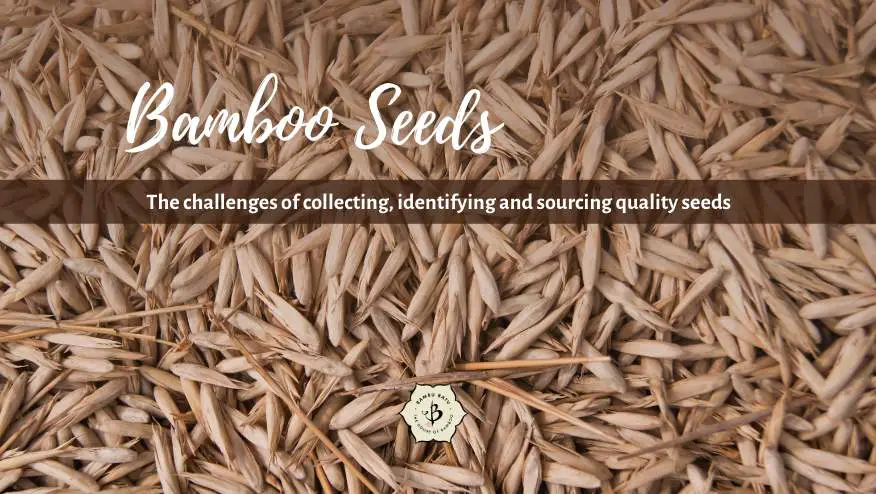
























Useful and basic information particularly to a person who thinks about a plantation to earn money. Good that you please keep it up.
Thank you so much for talking about this! I wondered about all those seeds online. I thought how is that possible when the plants only flower once every 50 years?
Planting 20 seeds/wk. of Giant “Thorny” Bambusa sp….sofar …they ..are..not …(I’ll have to get back up w/ya in 120 yrs.
Bambusa blumeana or B. bambos. Sounds like a labor of love!
So the bamboo at my aunt and uncle’s house, that has been there since 1970 is not going to be there, slowly taking over Cobb County until it reaches Atlanta and finally take back Sherman’s March to the sea. It’s going to just burst into bloom and die one day. I don’t know if that’s tragic or comforting. Bulldozers have put in subdivisions and not held it back. It slowly creeps back around cul-de-sacs and crosses creeks and makes its way around newly minted apartment complexes, slips up the banks of the mall and slides down into mini malls and slides around the whole foods, shades business park after business park after it finds purchase around 285. Now it has found new height in the toll road that towers over the inbound and outbound lanes like a giant roller coaster, just barely peeking above the drains. That’s what they get for cutting it. Like cudzu before it. No, we really never learn, do we. Weed whackers really will be our downfall. In the pouring down rain.